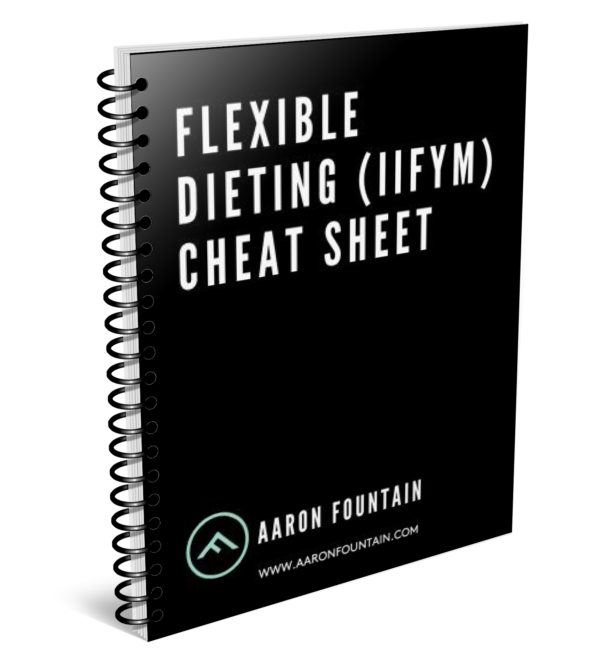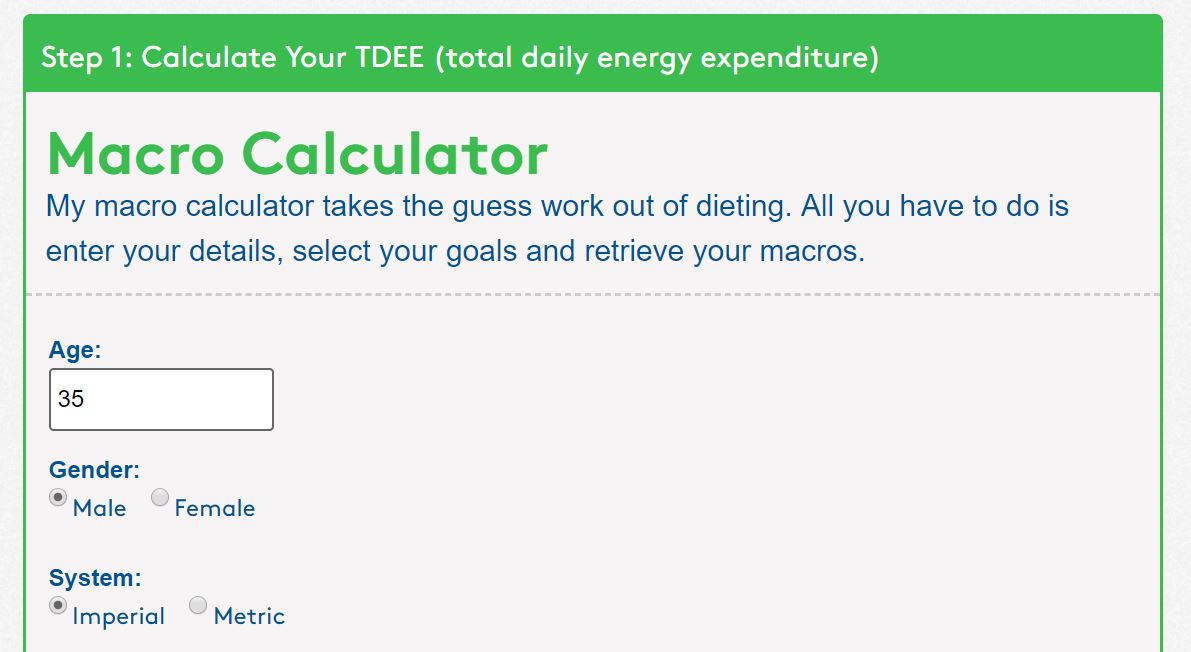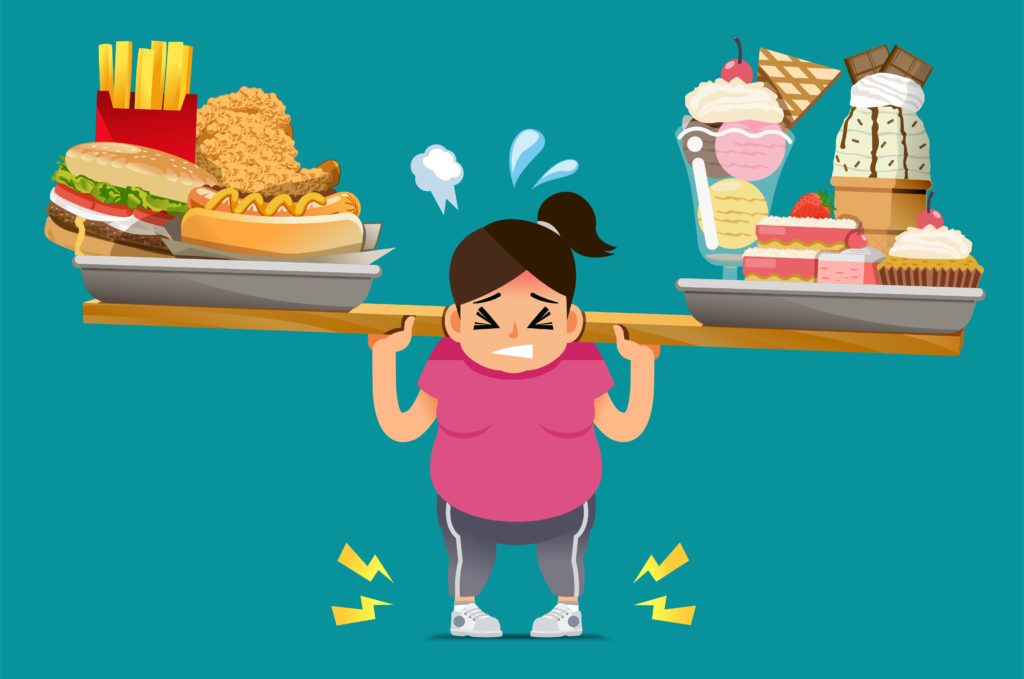
If you want a simple, enjoyable and sustainable diet plan to lose fat and gain muscle, then this article is for you.
Many people don’t have the best experiences or feelings around dieting.
And why?
Well, it comes down to one simple truth…
Most diets restrict / eliminate the foods we like to eat.

If it’s a food you like, you can bet that there’s a diet out there touting that it’s the reason why you can’t lose weight.
Unfortunately, most diets don’t educate consumers on how your metabolism actually works nor do they give tools to effectively manage it.
Instead they rely on labeling foods as “good” or “bad”.
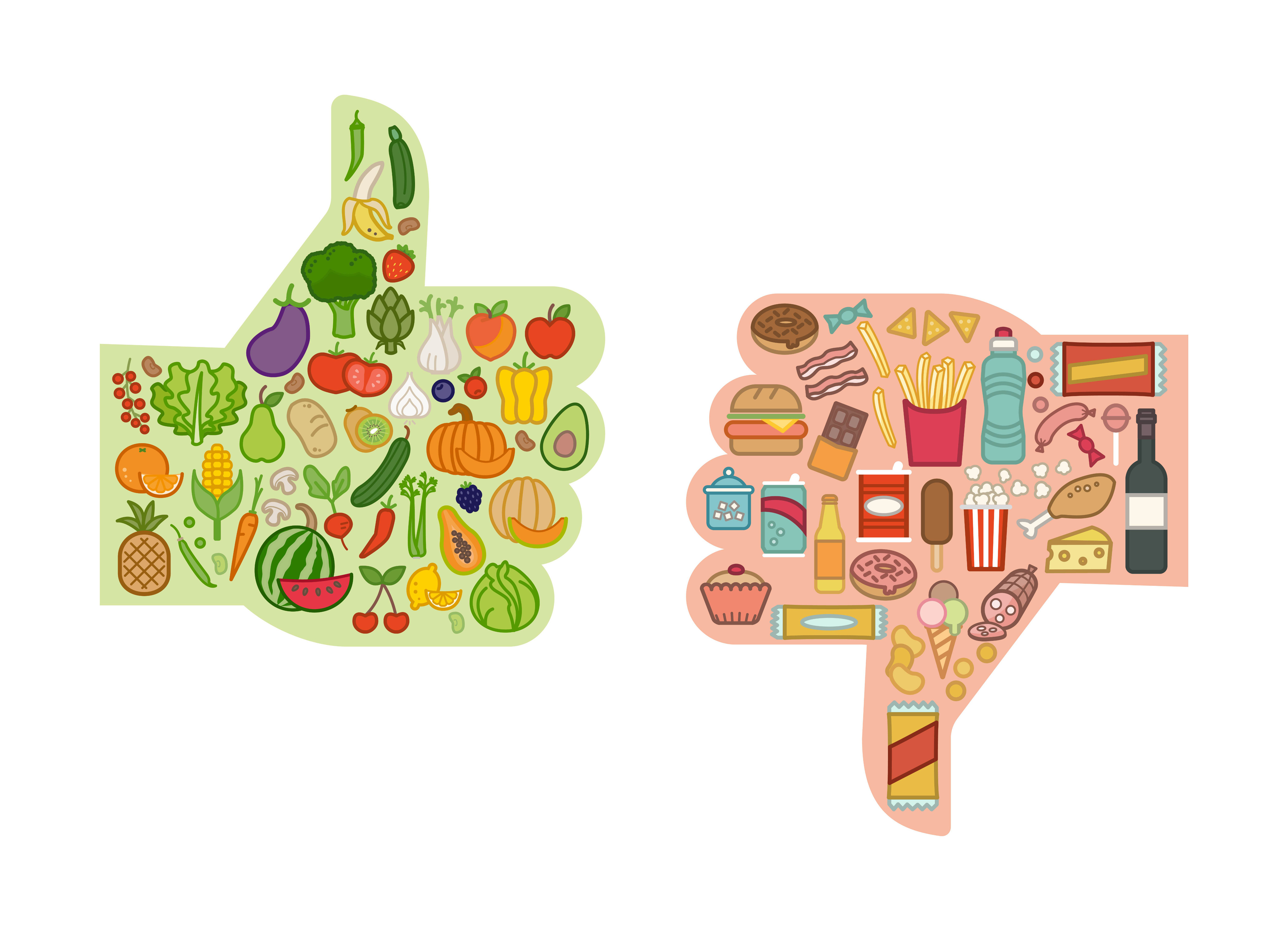
Some of today’s most vilified foods by popular diets…
- Carbs
- Gluten
- Sugar
- Processed Foods
- Red meat
- Fruit
- Dairy
Are there really “good” and “bad” foods?

In my opinion, there are no good or bad foods. Nor does any food directly contribute to weight loss or weight gain.
There are simply foods that are more nutritious than others.
In terms of body composition (muscle vs. fat), how much you eat is more important than what you eat.
Sugar, carbs, fat, etc. (insert your “bad” food) don’t make people fat, it’s the total amount of excess calories they’re consuming that causes weight gain.
And yes, for long-term health and leanness, a diet that is focused around healthy nutritious food should be the foundation.
But, labeling foods as “good” or “bad” just feeds into over-restriction, bingeing, and less food joy, not to mention shame and guilt.
What if we lived in a world where…
- You could break free from the stress and anxieties that are normally associated with dieting?
- You could follow a few simple dietary guidelines to build muscle and lose fat all while eating the foods you like every day…7 days a week?
I know, it sounds like a cheesy infomercial…
But, it’s true!
Welcome to the world of flexible dieting.
What is Flexible Dieting?
First, flexible dieting is a misnomer because it’s not actually a diet.
It’s a nutritional concept that relates calories and macronutrients in relation to our metabolism and overall daily energy expenditure.
Flexible dieting is a method of eating where you track macronutrients (protein, carbs and fat) for a particular health / body composition goal. It is also known as “if it fits your macros” (iifym).
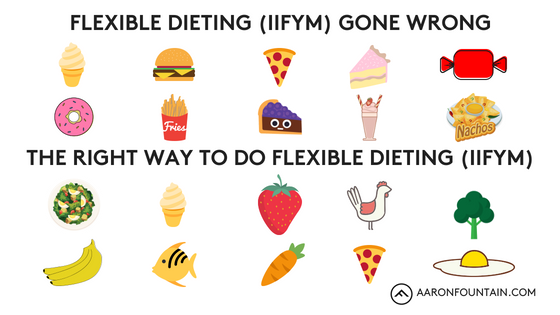
Essentially, you can eat whatever you want, and as long as it fits your macros, you’re golden.
This is true in the sense of total energy expenditure. Meaning that if you ate nothing but junk food, but are still in a caloric deficit, you’ll still lose weight.
A study called the twinkie diet proved that how much we eat is more important than what we eat when it comes to weight loss.
The self-study was performed by a college professor who lost 27 pounds by eating mostly junk food.
But, that’s not good for your body long-term no matter how lean or healthy someone may look.
Flexible dieting should be about “balance.”
Meaning, eat healthy nutritious whole foods, as well as the foods you like. Just make it fit your macronutrient targets for your goals.
In other words, flexible dieting is a method of eating that can be used to improve your body composition that you actually enjoy and can stick to.
How Flexible Dieting Works
First, we must understand the principle of energy expenditure in relation to our metabolism.
Our bodies require a certain amount of energy in the form of food (calories) each day.
If we eat more calories than our body needs consistently, we will gain weight. If we eat less calories than our body needs consistently, we will lose weight.

This is why every popular diet works for weight loss if followed correctly.
A caloric deficit is created by removing foods that you may normally eat, and weight loss occurs.
The problem is that many popular diets leave no room for the foods you like and are not sustainable long-term (think yo-yo dieting).
Flexible dieting allows for the foods that most diets restrict, making sticking to your goals easy and sustainable.
So, following the principle of energy expenditure, a calorie is a calorie.
Weight will be gained or lost depending on the relationship of total calories and one’s energy expenditure.
But, in terms of improving body composition, the content of the calories matter. This is where macronutrients come into play.
Here’s an example…
Let’s say you love eating carbohydrates. It’s time to lose the love handles and you decrease your overall calories, but you’re still eating a very high amount of carbs compared to protein and fat.
Because you’re in a caloric deficit, you’ll lose weight.
But, more of that weight loss will be muscle loss due to not eating adequate protein (protein is muscle repairing / sparing, especially in a caloric deficit).
The ideal scenario would be to get adequate protein, fat, and carbs.
Not only will this be healthier for your body, but the weight lost will be more fat and little to no muscle loss.
3 Rules For Getting Started With Flexible Dieting
Rule #1: Follow the 80/20 rule
So far we have learned that it is possible to change your body composition (muscle vs. fat) by hitting your macros even if your diet consists of pizza, burgers and ice cream.
But, just because it’s possible doesn’t mean we should do it. It’s not a recipe for long-term health, feeling well and performing your best.
Our bodies need adequate vitamins, minerals and fiber to run smoothly which come from nutrient dense and minimally processed foods (whole foods).
So, follow the 80/20 rule.
80 percent of the time, eat minimally processed, whole nutritious foods. 20 percent of the time, eat the foods you love.
Rule #2: Eat on a schedule that fits your lifestyle
Meal timing and frequency is far less important than we are led to believe.
There are so many different opinions out there on how many meals to eat per day and when to eat them.
This can range anywhere from 1-8 meals per day and claiming a host of health benefits for each protocol.
I personally practice intermittent fasting and eat about two times per day.
The truth is that overall calories and macronutrients are far more important than eating X times per day.
However…
If you are very active and lift weights, research has shown that eating protein before and after can help build muscle and strength over the long term. Also, carbohydrates before a workout can improve performance and recovery or your muscles post-workout.
So unless you’re training in a fasted state, my recommendations are to have at least 30 grams of protein and 30 grams of carbohydrates both before and after you workout.
Even with the above caveat, the takeaway point here is that overall intake (calories) and the makeup of that food (macronutrients) is more important than when you eat.
Rule #3: Chill out if you “mess up”
“Messing up” can be not hitting your daily macro numbers, under eating / overeating, or a full-out binge.
This is bound to happen from time to time, so if and when it does, chill out, brah.
No one ever got fat from one day of excess eating. And, no one ever got lean from one day of eating less.
It’s what we CONSISTENTLY do over time that gets us the results we want.
A “mess up” here and there isn’t going to make or break your results.
Setting Up A Flexible Dieting Plan
Enter your information into the Macro Calculator below…
There are quite a few options that will give you varying macros, so play with it and see which breakdown works best for you.
Once you have found your macros, now it’s time to plan your meals, start tracking and reaching your goals.
To learn more on how to track macros, read this HERE…
Keep in mind that this calculator (or any macro calculator) serves as a starting point.
The only way to know if the macros you’re using work for your goals is to test them for a couple weeks and see if you’re making progress.
To learn more about tracking your progress, read this HERE…
Adjust as necessary but remember, consistency over the long-term is key to success.
Wrapping Up
Flexible dieting is a strategy that is very effective at reaching health and body composition goals that is both enjoyable and sustainable.
It’s true, you can eat the foods you like and have the body you want!
This article is a brief introduction into flexible dieting, but it should give you everything you need to get started.
As always if you have any questions, let me know and I’m glad to help.
